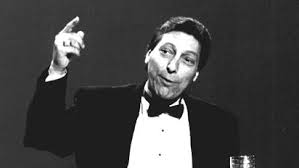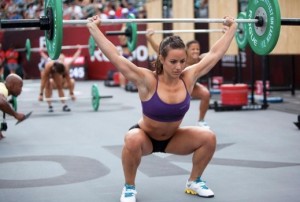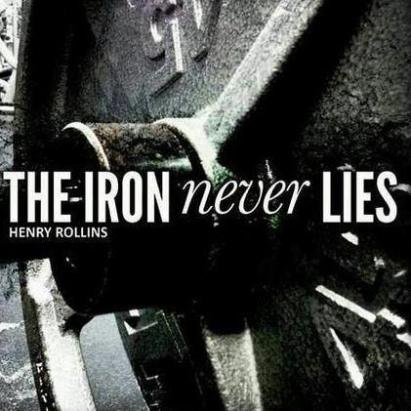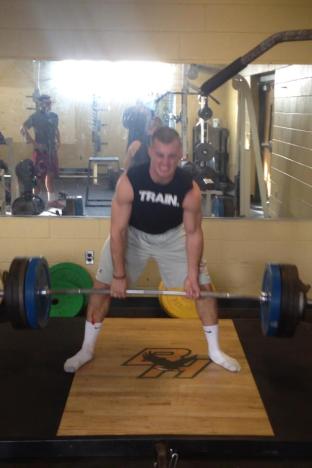
In part 1 of this piece, I attempted to design a mental image for you readers of what a common lifestyle among professional baseball players looks. We went over a few habits that can send a good season in the shitter, and some reasons why baseball players often don’t live up to their physical potential. I also mentioned to you that I felt lucky to have been through the ringer, for lack of a better word, and came out on the other side with the tools to ensure I make the most out of my talents, and go about my career in an efficient and productive manner.
Here in part 2 I will share the 5 lessons I picked up this year that I wish I knew a long time ago. So in other words, listen up if you play baseball! This will help you.
1.) To keep your shoulder healthy, you don’t need to do a ton of rotator cuff work-
As you know, shoulder injuries are as common in baseball as deer are in northeast Ohio. They are everywhere you look. It really took awhile for me to get it drilled into my head that doing shoulder strengthening work almost everyday in-season just doesn’t work. After years upon years of soreness, fatigue, and tightness in my shoulder, I finally took some really smart people’s advice on the matter, implemented it, and trusted it to last. The two people who were instrumental in giving me the tools in this aspect of my training are my strength coach, Eric Cressey of Cressey Performance, and my Boston physical therapist from Momentum Physical Therapy, Eric Schoenberg. Here are a few bulletpoints that they taught me, and have worked.
A.) Throwing is a rotator cuff exercise. Don’t go crazy on cuff work post-throwing. Instead, do some stabilizations or light band work to get some bloodflow back to the shoulder.
B.) If your internal range of motion of the shoulder is good, keep it that way by checking it, and only utilizing the sleeper stretch in post game cool down situations. Also, keep it moving the right way with good soft tissue once a week. Stretching a shoulder thats already loose is a bad combination.
C.) When you do cuff work, understand that the true function of the rotator cuff muscles are to make sure the humeral head stays centered. This video of EC coaching the cable external rotation really helps. Almost everyone does this wrong, and if you are a baseball player or just training, it is paramount that you aren’t firing with the wrong muscles here.
D.) “If you can turn it on, you can use it.” A quote from Eric S. to me during the season this year when I was experiencing some soreness in the front of my shoulder. Basically even when training I was working myself into a bad habit of using the un-useful muscles to perform even my lightest of cuff work. I wasn’t “turning on” or firing my cuff properly. Here is one of the exercises that helped. You must understand though, it wasn’t a strength issue in my shoulder, it was a timing and firing issue. This is where many players screw up in my opinion when dealing with nagging shoulder problems.
2.) Take advantage of days when your arm feels like a million bucks-
As a pitcher, these are your best opportunities for work in-season. In the past, I would look at these days with a perspective of the “well I might pitch today” attitude. No. This is wrong. When you feel good, get up on the hill for a few pitches to work on something specific. Dont be stupid and throw 50 pitches. Focus hard on weaknesses, get comfortable for 10-12 pitches and get outta there.
An alternative, if you feel comfortable with everything on the mound, would be to get a long toss session in. This will give you a chance to air it out a little bit and get your arm speed rocking. Make sure you don’t force the issue, as the main objective here is to get work AND feel good when you pitch next. Starters can plan more than relievers though, obviously.
3.) It’s not hard to maintain strength if you’ve trained the right way in the off-season and pre-season-
Let me just start this by saying if you don’t train like a savage and prepare for the season the right way, then this doesn’t apply to your sorry ass. But for you athletes who do give a shit, the ones who logged all the hours, and layed on some serious strength during the winter months, then when the season comes, it’s not time for worrying about seeing how much you can deadlift. You need to find out how to keep your strength with the minimum possible energy expenditure. Everything you do in the weight room needs to be geared toward feeling like a boss during the game.
4.) I believe staying in good cardiovascular condition is very important, however, running is not the solution
It’s no secret that when you go to compete in the game, your heart rate is very high. If it’s not, you probably either hate baseball or are some sort of Tibetan monk. With that understanding, we need to train so we have some good wind and aren’t huffing and puffing out there. Some strategies that worked for me were implementing shorter rest periods in my lifts, and jogging back to the start line as a recovery on sprint days. These are low impact solutions that will allow you to feel from a cardio perspective, that you are prepared for high intensity parts of the game.
5.) Blacking out my bedroom and taking ZMA helped me sleep and recover like a champion-
Resting properly is one of the most overlooked assets of an efficient athlete. Anthony Mychal wrote an absolutely fantastic article over at T-Nation talking about tuning your nervous system and recovery to boost performance. Check his post out here.
Its been researched that having a room completely dark with no light entering your eyesight whatsoever allows your body to fall into the deepest sleep possible where the most recovery power occurs. I turned off my phone, computer, and even covered my window with blackout tint this season to make sure I was recovering the right way. As a tip, make sure the blinds block out all light even in the morning when sun comes through to wake you up.
Another item that’s been highly researched is the supplement ZMA. It is just capsules of zinc and magnesium, 2 minerals athletes are often deficient in. When taken 30 min before bed, I would wake up feeling refreshed and felt like I was in a deeper state of sleep, longer thru for the duration of the night. Of course, you should research whether this product would be good for you, but for an active athlete who sweats a lot, and expends alot of energy, I think its great a great addition to a great training program and even better meal plan.

Just like anything in life, we are constantly learning, growing, building, and becoming more efficient at what we do. I hope those of you who are taking the time to read this understand that here at Show Me Strength, we are writing for those of you who are just as hungry for answers and returns on your hard work as we are. I hope you find these things I’ve learned this year informative, and as always feel free to ask us questions in the comment section below. Or you can catch us at showmestrength@gmail.com, Facebook or Twitter!














